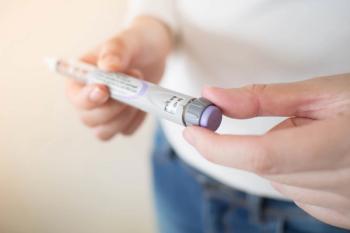
- Drug Topics November/December 2023
- Volume 167
- Issue 10
PA Programs Draw Pharmacy’s Best and Brightest
Physician assistants have pulled well ahead of pharmacists in a recent listing of top jobs in the health care profession.
Back in 1977, I anxiously awaited to hear the results of my application to the University of Pittsburgh School of Pharmacy in Pennsylvania. We were told that a fat envelope is always good news because it would include all the information needed to start pharmacy school. A thin envelope was always bad news because it would be a single-page rejection letter.
The mail came that summer day while I was working at the paper mill—it was a thin envelope. My mother got the mail and was terrified when she saw it. She opened the envelope, as she could not wait for me to get home and would soothe me after the bad news. The letter started out, “Congratulations…” It was signed by Dr Balwant Dixit, acting dean of the University of Pittsburgh School of Pharmacy.
When I walked up the driveway, there was a sign on the side door that said “Pete, you made it.” I thought it was no big deal that I had gotten home from work at the mill, but that sign was actually posted to tell me I had been accepted into pharmacy school. Over 600 students applied, and I was one of the lucky 100 to be accepted.
Applications to US pharmacy schools plummeted nearly 70% from their peak in the fall of 2009 to the fall of 2021, according to the most recent data published by the American Association of Colleges of Pharmacy. Those schools, which graduated nearly 15,000 students a year at their peak, are expected to produce just 11,000 new pharmacists annually by 2025.
“I could cry as to what’s happening in my profession,” said Daniel A. Hussar, PhD, a professor and dean emeritus at the Philadelphia College of Pharmacy, in an October 2023 interview with USA Today.1 Hussar taught for 52 years before retiring in 2018. He went on to lament the transformation of a once-vaunted career into the equivalent of a fast-food job, where workers are pressured to upsell every customer and race through every order.
I share Hussar’s disappointment with this profession.
So where are the best and brightest heading, if they are not matriculating into pharmacy school? I’m not a detective, but I do have a hunch: Think of a profession that also requires 6 years of study, just like pharmacy school. According to the 2023 US News and World Report Best Jobs report,2 this mystery profession was the No. 2 best job in health care. (Pharmacists were rated as No. 22 in this report.) Their pay is comparable to pharmacists’, with opportunities to reach the $200,000 mark. The answer? Physician assistants (PAs). According to the Bureau of Labor Statistics, opportunities for PAs are expected to grow by 27% in the next decade, which is at a much faster rate than most occupations.3 I feel that is where the best and brightest are heading, to a job that, upon graduation, requires no residency and is significantly less equivalent to a fast-food job, where their clinical skills are put to use every minute of their workday.
I had the privilege of teaching in a PA curriculum for 16 years but had to leave that amazing experience when we moved to West Virginia. The 55 students who occupied those seats were among the best and brightest that I have ever worked with. Many keep in touch with me and voraciously read anything I send their way. Those graduates have flexibility in choosing whatever discipline interests them. One of my favorite students worked for 8 years in a pediatrics office. He felt stagnation and switched to endocrinology, and at last report, he is doing extremely well there. The endocrinologists there trained him in the ways of their practice, and he has become an amazing addition to their team. He did not do a residency; he simply learned while on the job.
Several years ago, a senior from Altoona High School in Pennsylvania came to work in my pharmacy as a student. She wasn’t sure whether she wanted to pursue a career in pharmacy or as a PA. By December, she made her decision to apply to Saint Francis University in Loretto, Pennsylvania, to become a PA. After 3 months, she knew that she didn’t want to spend her life in a pharmacy. That store was a dream job for a pharmacist, but what she saw was enough to discourage her. I’m sure if she worked for one of the big 4 chains, she could have made her decision in a day! We still stay in touch, and she seems so happy taking care of her patients.
The PA curriculum is eating our lunch by taking so many of the best and brightest out of the halls of the schools of pharmacy. Only 31% of applicants are accepted into their chosen PA school—or any PA school, for that matter. On the other hand, 41% of applicants are accepted into medical school.4 With a 70% decrease in applications to pharmacy school, it is time that we look at the practice of the profession, the costs of the program, and the need for residencies.
Peter A. Kreckel, RPh, practices community pharmacy in Altoona, Pennsylvania.
References
1. Le Coz E. Prescription for disaster: America’sbroken pharmacy system in revolt over burnout and errors. USA Today. October 26, 2023. Accessed November 14, 2023. https://www.usatoday.com/story/news/investigations/2023/10/26/pharmacy-chains-dangerous-conditions-medication-errors/71153960007/
2. Best health care jobs. US News and World Report. 2023. Accessed November 14, 2023. https://money.usnews.com/careers/best-jobs/rankings/best-healthcare-jobs
3. Physician assistants. US Bureau of Labor Statistics. Updated September 6, 2023. Accessed November 14, 2023. https://www.bls.gov/ooh/healthcare/physician-assistants.htm
4. PA schools with the highest acceptance rate. EducationScientists. November 29, 2021. Accessed November 14, 2023. https://educationscientists.com/pa-schools-with-the-highest/
Articles in this issue
about 2 years ago
Expert Interview: Protein-Based Vaccines for COVID-19about 2 years ago
In the Opioid Epidemic, Treatment Challenges Still PersistNewsletter
Pharmacy practice is always changing. Stay ahead of the curve with the Drug Topics newsletter and get the latest drug information, industry trends, and patient care tips.
























































































































